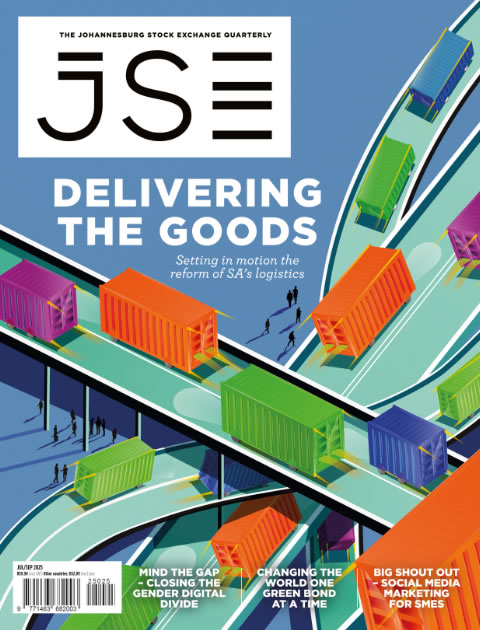What do you get when you combine a beer company that believes in cost-cutting, standardising and centralised control, with a brewer that is built on regional independence and knows the value of having fun while toasting its achievements with a cold beer at their onsite bar?
Do you get a fun-loving miser? Or a carbon-copy federalist? It doesn’t sound like it can work, does it? But although clashing company cultures have the potential to sabotage the ultimate success of M&As, there are ways to smooth the transition and create a new, combined entity that has its own corporate culture.
‘What this culture will look like depends on the size of the players that are involved and the strength of their two cultures,’ says Jeffrey Bagraim, professor of organisational psychology at the University of Cape Town.
‘A strong culture is more difficult to change. So if two strong cultures merge, the problems are much greater. It really depends on the circum-stances but what is certain is that a new culture needs to be created after a merger, and that is a slow, demanding challenge.’
Anheuser-Busch (AB) InBev will take up this challenge with a proposed £71 billion acquisition of its closest competitor, SABMiller. The transaction has sparked hefty discussions about their differing cultures and leadership styles. Media outlets worldwide are speculating as to what exactly the new MegaBrew company will entail.
‘First, we must understand what corporate culture is,’ says Mias de Klerk, head of human capital management at the University of Stellenbosch Business School (USB). Company culture is often defined as ‘the way we do things around here’ while the company climate is ‘the way we feel about our company and our work environment’.
Putting it less colloquially, this means that company culture is the result of an organisation’s history, management approaches and leadership styles. According to De Klerk: ‘Culture is built on what made an organisation successful, and continues in an organisation as learned and conditioned behaviour, institutionalised in the systems and structures of the organisation. As such, no organisation has – or can have – the same culture.
‘In fact, cultures of different organisations within the same industry can differ vastly. Culture serves to give employees and managers a sense of security as it helps them to understand what to do, how to do it, what is preferred and acceptable, and what’s not,’ he says. Therefore it is extremely difficult to objectively define and measure the culture of a specific organisation.
An article by global culture-shaping consultancy Senn Delaney, titled Cultural Clash in Mergers and Acquisitions, suggests the following processes to understand where company cultures might clash.
‘Culture is built on what made an organisation successful, and continues as learned and conditioned behaviour’
MIAS DE KLERK, HEAD OF HUMAN CAPITAL MANAGEMENT, UNIVERSITY OF STELLENBOSCH BUSINESS SCHOOL
‘Develop a simple and quick profile of the two companies’ cultures through surveys and interviews, and note similarities and differences in decision styles and the internal reinforcement systems, including compensation/benefit systems, performance review systems, and hiring and firing criteria.
‘Compare philosophies of the dominant leaders, especially if they are both to stay on, and have them openly discuss not only financial considerations, but the similarities and differences in the cultures and the proposed nature of the cultural integration, such as autonomous organisations, assimilation or creation of a new entity.’
The dominant leader Carlos Brito, the Brazilian CEO of AB InBev, is frequently portrayed as a relentless penny-pincher. According to Bloomberg, he did not mind when executives left after AB InBev took over Anheuser-Busch in 2010.
In fact, he is quoted as considering this to be ‘great, because we then promoted people and they said, “this is my company now”’. His media team has been careful not to call the SABMiller deal a takeover and instead uses the euphemism ‘combine’, stating that the joining of the companies would ‘build the first truly global beer company’.
Asked how he would bring together two different companies and cultures, Brito said in a statement: ‘Our companies and cultures are more similar than they are different. We are both grounded in the belief that great companies are made up of great operators and great people.’
Even if a takeover is congenial at the top level, it is unlikely that the senior managers and lower-level employees will feel that same congeniality. ‘In a takeover, two different cultures come together in a drastic, dramatic and perhaps even a hostile way’, says De Klerk.
‘Thus, the people in the company being taken over may not only feel that their organisation is “conquered” by the other party, but their culture may also be taken over and dominated by the other party. This is likely to create much uncertainty, combined with strong emotions and unhappiness.’

De Klerk also points out the irony that after a takeover, the leadership expects the ‘conquered’ employees to make a success of the newly formed company. He says: ‘Unless the emotional impact of “being taken over” by another organisation is dealt with sensitively – but intensely – it’s unlikely that a new productive combined culture will develop, resulting in sub-optimal performance and a failure of the takeover.
‘It is not uncommon that employees, including managers, who feel aggrieved in such a takeover may actively or passively, consciously or unconsciously sabotage the newly formed organisation.’
To this Bagraim adds: ‘There are many takeovers of the small by the big that are successful and many large organisations even want to retain the dynamic cultures of their small acquisitions and apply sufficient autonomy and flexibility. It’s the mergers of large organisations that are fraught.
‘Research indicates that more than 50% of mergers fail but you often read that the figure is closer to 80%. I don’t think there is sufficient research to present a number, but the sense is that success cannot be taken for granted and that culture and people issues are often the biggest impediment.’ Failed mergers include DaimlerChrysler, AOL-Time Warner and HP-Compaq.
A study titled M&A Beyond Borders: Opportunities and Risks by the Economist Intelligence Unit underlines Bagraim’s statement. The research found that ‘organisational cultural differences’ and ‘people integration issues’ are the two most significant post-transaction challenges.
‘Transactions that fail to recognise and manage cultural differences experience slower and more painful integration characterised by lower productivity and performance; lower levels of employee engagement; employee resistance to workplace change; tension and poor morale; misunderstandings about what is and what is not important; slower execution; and talent turnover.’
The key to ease the integration process during a takeover is a clear and structured plan, which needs to be communicated openly, and early on, by the leadership to employees at every level of both companies. If the strategy and goals of the new entity are transparent, there will be fewer rumours and less anxiety among the employees.
Most experts agree that a strong leadership is vital for a successful takeover. The top executives should be visible and actively participate in communicating with their senior management and lower-level employees.
‘Leadership is core to culture and changing cultures – potentially the most important transformative force in organisational culture. Merging cultures is vexed in that it takes time and requires tremendous leadership energy and vision,’ says Bagraim. The AB InBev-SAB transaction is expected to take until mid-2016, but achieving synergy between the company cultures may take even longer.
The reasons behind the deal include expansion into new geographic regions, whereas previous AB InBev acquisitions focused mainly on consolidation and cost savings.
Both companies will benefit from the transaction and, as analysts have noted, the merger is a bulwark against the growing foothold of craft and microbreweries. De Klerk adds: ‘One must remember that SAB is not an organisation in crisis. It has a long and proud history as one of the biggest beer and soft drink companies globally.
‘It will serve AB InBev well to keep the changes as small as possible initially and to let SAB continue to operate as autonomously possible as a business entity under the ownership of AB InBev. This approach will demonstrate the necessary respect and also give leaders and staff time to get to know the people and systems.
‘As a result, unnecessary actions and changes will be avoided, emotions should be less intense and the identity loss will not be experienced as severely and emotionally,’ he says.
De Klerk suggests that over a period of time, AB InBev should implement smaller changes, slowly infiltrating and influencing the SAB culture and practices until there is a full integration between the two organisations.
That way the frugal, centrally controlled brewer and the fun-loving decentralised beer company could make the takeover work.









